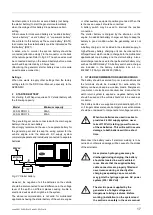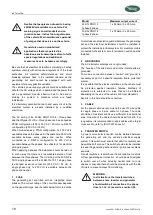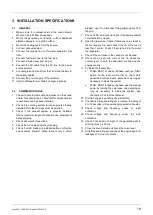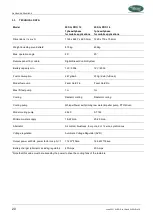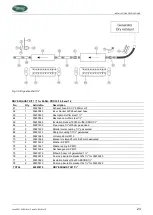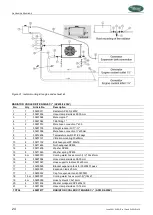
June 2021 W-SQ-Pro 15 and W-SQ-Pro 18
11
3
FUEL PIPES
When the tank is above the generating set (figure 8) we
recommend ending the return line on the top of the tank.
When the return is on the top - in case of a leakage the
return line cannot overflow because of siphoning. One will
only need a fuel cock in the fuel supply line. When the tank
is below the generating set we recommend ending the
return line on the bottom of the tank (A) below the inlet of
the supply line.
Both supply and return fuel pipelines should be appropriate
material and 8 mm inner diameter tubing. The quality of the
tubing of fuel pipes could be submitted to local regulations
depending on the application of the vehicle.
The fuel pipes can be plumbed to the flexible hoses which
are on the generating set and have a connection to fit to 8
mm pipe. This fuel lines fulfils CE standards and are
according to ISO 7840 A2.
It is important to avoid bends in the pipes, as they could trap
air bubbles. The return pipe should never be connected to
the suction pipe. The return line should be of 8 mm diameter
and go straight back via the top to the bottom of the tank.
When the return is too narrow, has too many bends and
goes back to the bottom of the fuel tank, the back-pressure
could be too high. This results in irregular running of the
engine. When the engine runs irregular, one can check if
back-pressure is the problem by disconnecting the return
line just outside the canopy and draining it in a canister.
When the engine runs smooth now, the return piping has to
be changed. It could also help to install a second (electrical
12V) fuel lift pump in the supply line to increase the
pressure.
4
FUEL FILTERS
A fine fuel filter is installed which requires maintenance.
WhisperPower advises to install an extra fuel filter/ water
fuel separator near the fuel tank.
Before starting your generating set for the first time follow
the fuel system bleeding procedure in the User Manual.
2.3.3
Radiator cooling
1
GENERAL INSTRUCTIONS
The radiators can be mounted below the floor, in the side or
on the roof of the mobile/land applications. It is
recommended to keep the radiators as close as possible to
the unit. The piping should be fitted as direct as possible.
Figure 12: Ventilating and air trap
Special attention should be paid to the ventilation of the
systems. Each installation system is standard supplied with
an expansion tank for the coolant, which is also used to
release air bubbles and makes it possible to add coolant
into the system in an easy way. This expansion tank should
be at the highest point of the system and mounted as high
as possible.
Most cooling problems originate from air
traps blocking the circulation of the engine
coolant.
For the engine we use a pressurized system. The 12 mm
connection on the top is closed. Wherever the radiators are
mounted it is necessary to bleed the exhaust manifold of the
engine. The exhaust manifold has a 8 mm connection to
ventilate the manifold. There is an 8 mm high pressure and
high temperature resistant hose in the delivery to connect
the hose connection on the side of the manifold with the
expansion tank.
Initially the engine cooling system can be filled via the cap
on the exhaust manifold of the engine. However when the
radiator is above the engine one can only fill the system to
the level of the manifold. Additional filling has to be done via
the expansion tank.
For large engine cooling systems with long pipes or for extra
reserve there is an extra large expansion tank with a
content of 7 liters and an alarm for low coolant level that can
be supplied as an option (refer to figure 13).

















